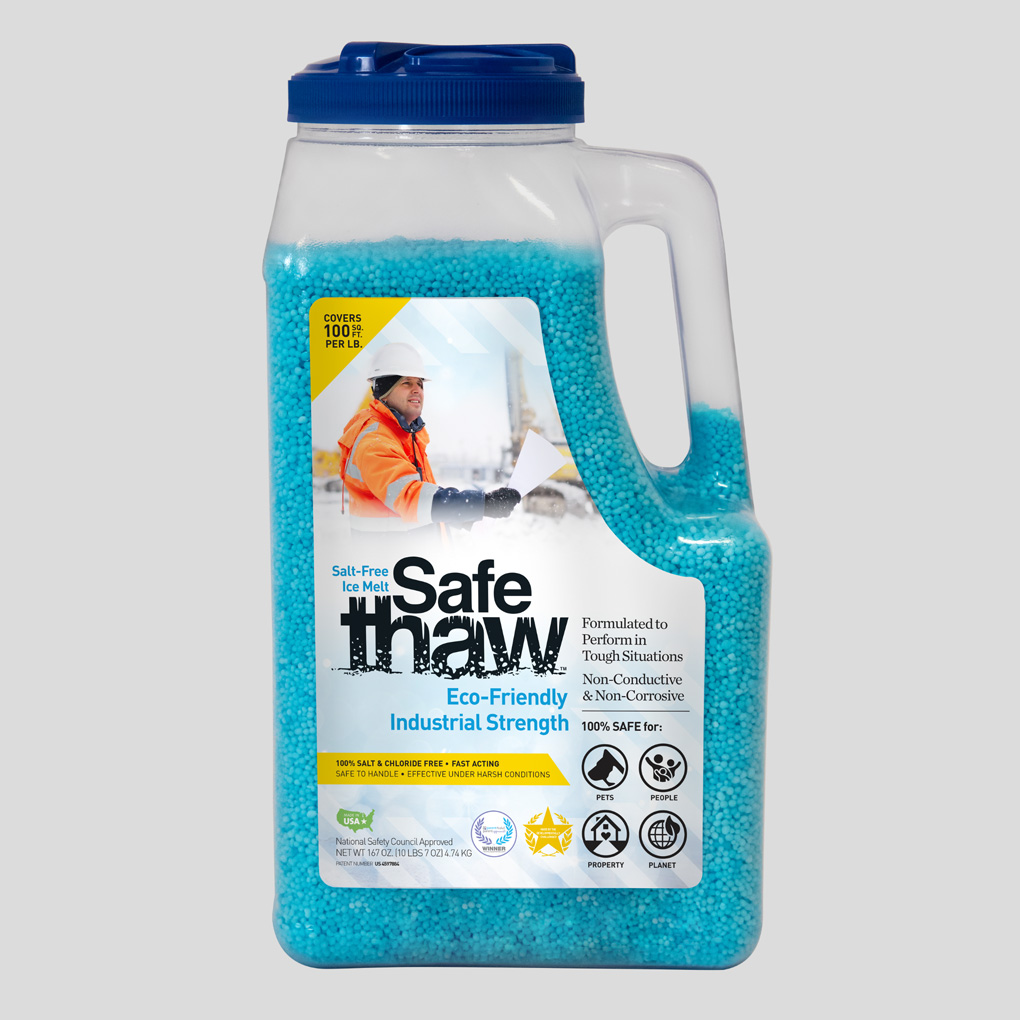What Temperature Does Ice Melt: Safe Thaw’s Efficiency Explained.

Picture this: a world blanketed in a crystalline coat of ice, a captivating yet treacherous sight. Amidst the cold embrace of winter, an age-old question emerges: at what temperature does ice surrender to its liquid form? As the frosty tendrils of curiosity beckon, we delve into the intricacies of this phenomenon, aiming to decode the melting point of ice and the game-changing efficiency of Safe Thaw.

Frozen Driveways? Melt the Ice Away with Safe Thaw!
Safe Thaw was created as the ice management solution for tough winter environments. Ideal in commercial and industrial properties, shops, government agencies, bridges, and construction.
The Dance Of Molecules: Unraveling The Melting Process
Ice, that solid reservoir of frozen water molecules, holds its structure together thanks to intermolecular forces. But as temperatures rise, a molecular transformation commences, and the bonds weaken. This heralds the realm of the melting point, that precise temperature at which the delicate equilibrium between solid and liquid shifts.
The Magical Number: Discovering The Melting Point
So, what temperature does ice melt? And, how long does it take salt to melt ice? With precision, it’s a dance between 0°C (32°F) and 0.01°C (32.018°F). It’s as if nature orchestrates this delicate balance, allowing the transformation to occur within a narrow range. As heat energy infuses the ice, its molecules regain mobility, slipping away from their crystalline structure.
Navigating The Real World: Practical Implications
In a world where practicality reigns supreme, understanding the melting point of ice has significant implications. It’s a dance of safety, the difference between icy sidewalks and secure pathways. Traditionally, municipalities have turned to salt as a remedy. However, while salt does indeed lower the freezing point of water, it’s not the most efficient solution.
Winter Storms Are Here!
Stay Safe with Our 100% Salt And Chloride-Free, Pet Safe Ice Melt.
The Salt Predicament: Beyond The Freezing Point
Salt’s effectiveness hinges on its ability to depress the freezing point of water. But there’s a catch—it doesn’t work indefinitely. At extremely low temperatures, salt’s power wanes, leaving surfaces susceptible to black ice. Moreover, the corrosive nature of salt can wreak havoc on concrete and vehicles, a testament to the intricate web of consequences that simple actions can trigger.
Safe Thaw’s Symphony: A Solution That Transcends
Amidst this icy puzzle emerges Safe Thaw, a dynamic solution that transcends conventional boundaries. Beyond the question of what temperature does ice melt, Safe Thaw introduces a paradigm shift. With an advanced formulation designed to tackle extreme cold, it’s a catalyst for transformation even at temperatures as low as -2°F.
A Symphony Of Safety: From Idea To Reality
Imagine a world where pathways remain surefooted and vehicles glide effortlessly. Safe Thaw realizes this vision, melting ice with precision and swiftness. In a symphony of safety, it goes beyond traditional deicers, addressing the concerns of both efficiency and environmental impact. It’s the harmony of innovation and nature working in tandem.
100% Salt & Chloride-Free Ice Melt for Winter Storm Protection.
Conclusion: Paving The Path To Safety
So, what temperature does ice melt? It’s not just a scientific curiosity; it’s a pivotal question that shapes our daily lives, especially during the icy embrace of winter. As we navigate the delicate balance between safety and environment, solutions like Safe Thaw stand out, offering a nuanced answer to a seemingly simple question. In the ever-evolving realm of winter maintenance, understanding the science behind ice melting brings us closer to building a safer, more secure world for all.
Try Also Our Other Winter Safety Products:
Safe Paw
The Original and #1 Selling Pet and Child Safe Ice Melt for over 20 years. Guaranteed environmentally safe –It won’t harm animals or children, and it won’t damage your property. That’s Safe Paw. Safe Paw can change how winter affects our planet.

Walk On Ice
The handy disposable canister can be taken everywhere, with the same 100% naturally occurring minerals that provide instant traction on ice or snow. Use it on sidewalks, steps, or as an instant traction agent for your car.



